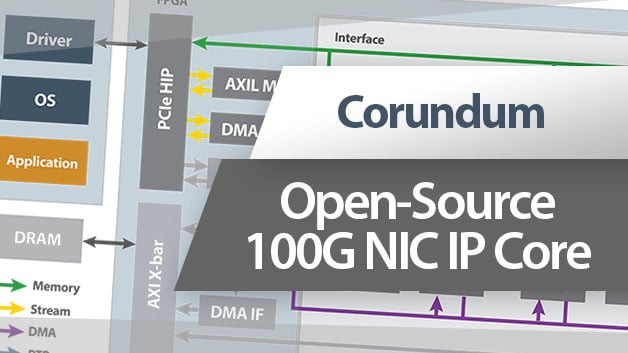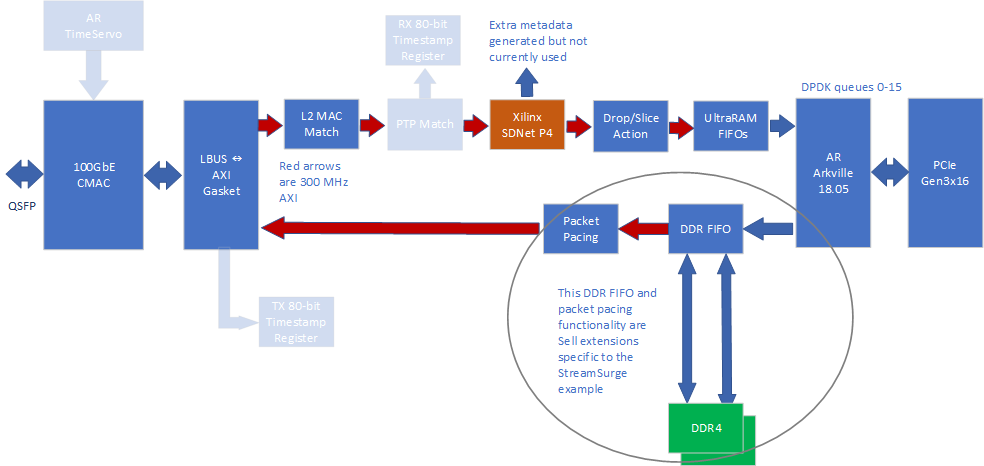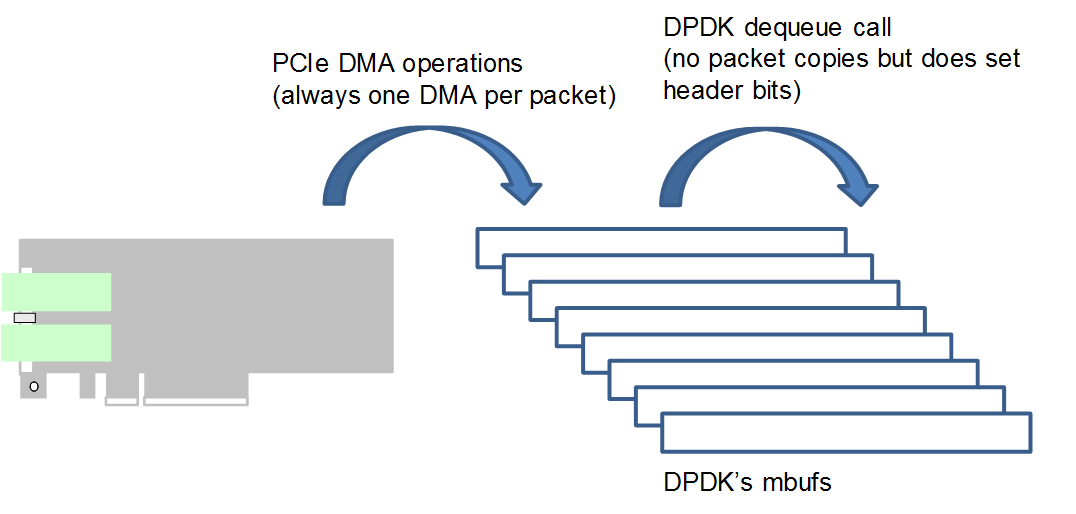
Open-Source 100G NIC IP from Corundum
Go Back to IP & Solutions Corundum Open-Source 100G NIC IP Core Jump-start your SmartNIC project with the open-source Corundum IP core! It’s got the
SmartNIC Shell is a complete working NIC that is implemented on a BittWare FPGA board as a starting point that users add FPGA value into. You can use SmartNIC Shell to quickly deploy network functions (NFV), network monitoring, specialized packet broker, or anything else that manipulates packets. The shell provides DPDK offload to interact with host applications; it is delivered as FPGA project source and as a fully functional bitstream.
SmartNIC Shell supports the following BittWare products:
The Loopback’s FPGA bitstream contains several components. Each component has an AXI4-Stream interface on both input and output collectively used as a data plane. The bitstream’s control plane uses AXI4-Lite interfaces connected to the physical PCIe interface.

DPDK is implemented in the FPGA on the BittWare card. BittWare’s joint effort with Atomic Rules is the first DPDK implementation inside an FPGA.
The BittWare board uses a patched version of the Atomic Rules PMD. The base PMD is included inside the DPDK distribution. BittWare supplies the necessary patches as part of our source distribution. All of BittWare’s testing with DPDK uses the uio_pci_generic driver, which replaces the BittWorks II driver. However, some of the BittWorks II tools still work.
Users receive the following:
Most ASIC and FPGA DPDK implementations perform one copy:

In contrast, SmartNIC Shell’s DPDK IP Core always DMAs directly into DPDK mbufs, never requiring the CPU to copy packet data. No second DMA is needed for metadata, reducing CPU overhead, latency, and host memory requirements. This does eliminate the opportunity for some PCIe optimizations like coalescing small packets into fewer DMAs or writing data preformatted as PCAP records. If needed, your application code can do those things in the FPGA above the DPDK core.

What you see on this page is the introduction to BittWare’s SmartNIC Shell. There’s a lot more detail in the full App Note! Fill in the form to request access to a PDF version of the full App Note.
"*" indicates required fields

Go Back to IP & Solutions Corundum Open-Source 100G NIC IP Core Jump-start your SmartNIC project with the open-source Corundum IP core! It’s got the
PCIe FPGA Card XUP-VV4 UltraScale+ FPGA PCIe Board with VU13P 4x 100GbE and up to 512GB DDR4 Need a Price Quote? Jump to Pricing Form
FPGA Server TeraBox 2102D 2U Server for FPGA Cards Legacy Product Notice: This is a legacy product and is not recommended for new designs. It
PCIe FPGA Card XUP-VVH UltraScale+ FPGA PCIe Board with Integrated HBM2 Memory 4x 100GbE Network Ports and VU37P FPGA Need a Price Quote? Jump to